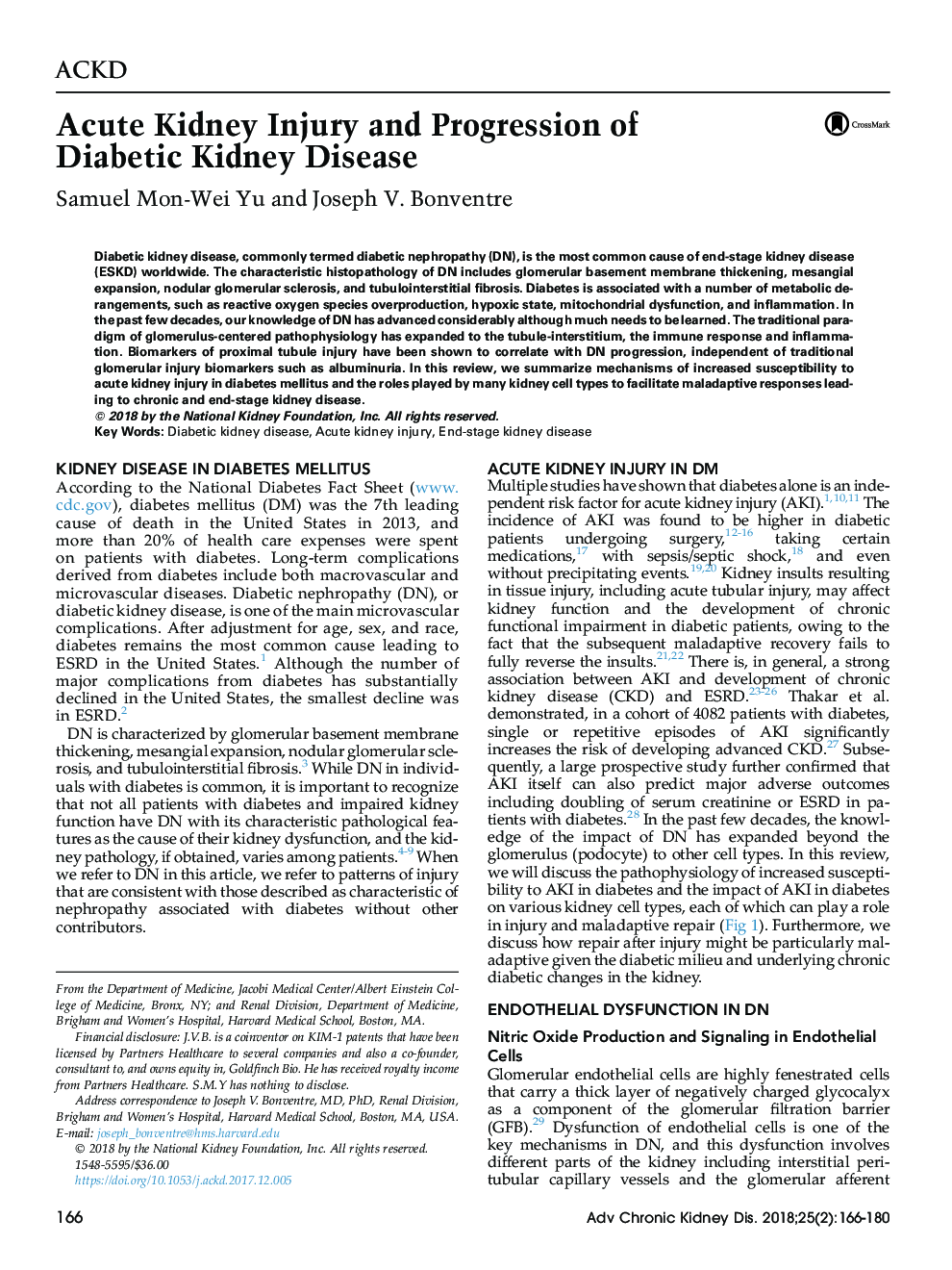| Article ID | Journal | Published Year | Pages | File Type |
|---|---|---|---|---|
| 8769615 | Advances in Chronic Kidney Disease | 2018 | 15 Pages |
Abstract
Diabetic kidney disease, commonly termed diabetic nephropathy (DN), is the most common cause of end-stage kidney disease (ESKD) worldwide. The characteristic histopathology of DN includes glomerular basement membrane thickening, mesangial expansion, nodular glomerular sclerosis, and tubulointerstitial fibrosis. Diabetes is associated with a number of metabolic derangements, such as reactive oxygen species overproduction, hypoxic state, mitochondrial dysfunction, and inflammation. In the past few decades, our knowledge of DN has advanced considerably although much needs to be learned. The traditional paradigm of glomerulus-centered pathophysiology has expanded to the tubule-interstitium, the immune response and inflammation. Biomarkers of proximal tubule injury have been shown to correlate with DN progression, independent of traditional glomerular injury biomarkers such as albuminuria. In this review, we summarize mechanisms of increased susceptibility to acute kidney injury in diabetes mellitus and the roles played by many kidney cell types to facilitate maladaptive responses leading to chronic and end-stage kidney disease.
Related Topics
Health Sciences
Medicine and Dentistry
Nephrology
Authors
Samuel Mon-Wei Yu, Joseph V. Bonventre,
